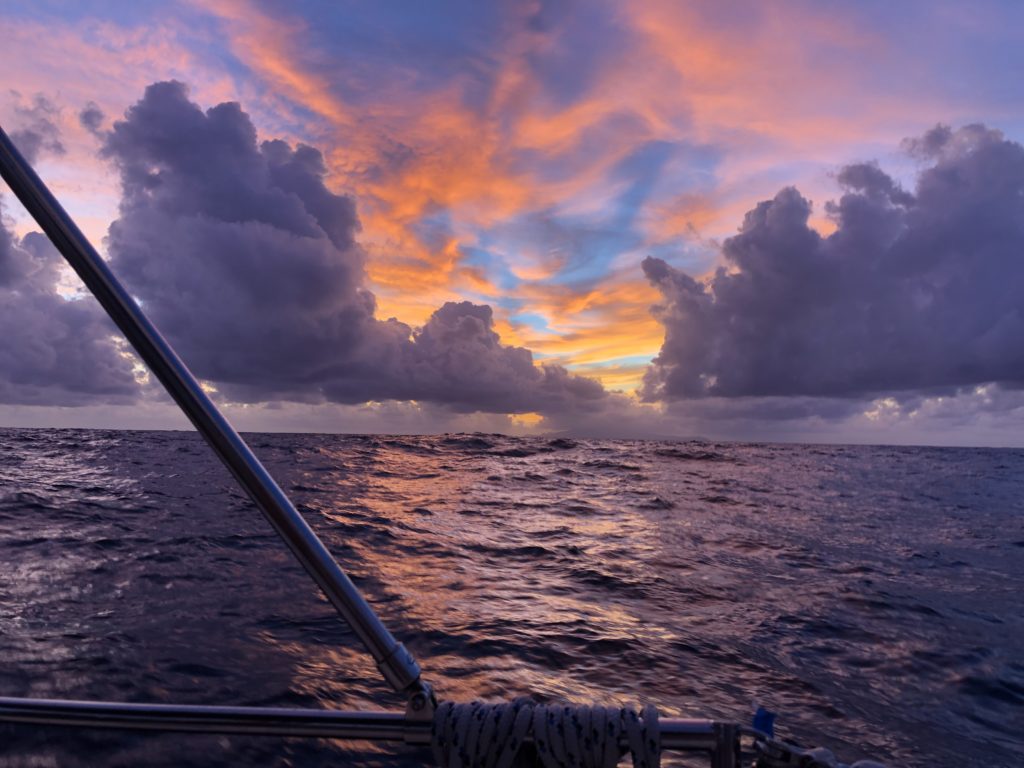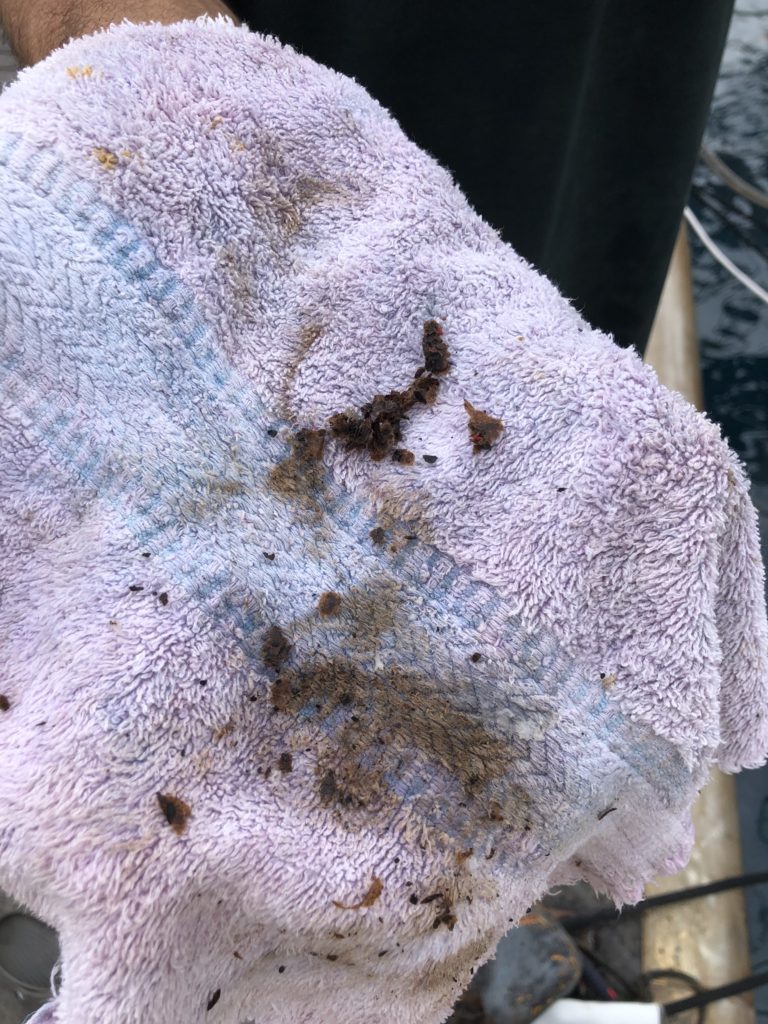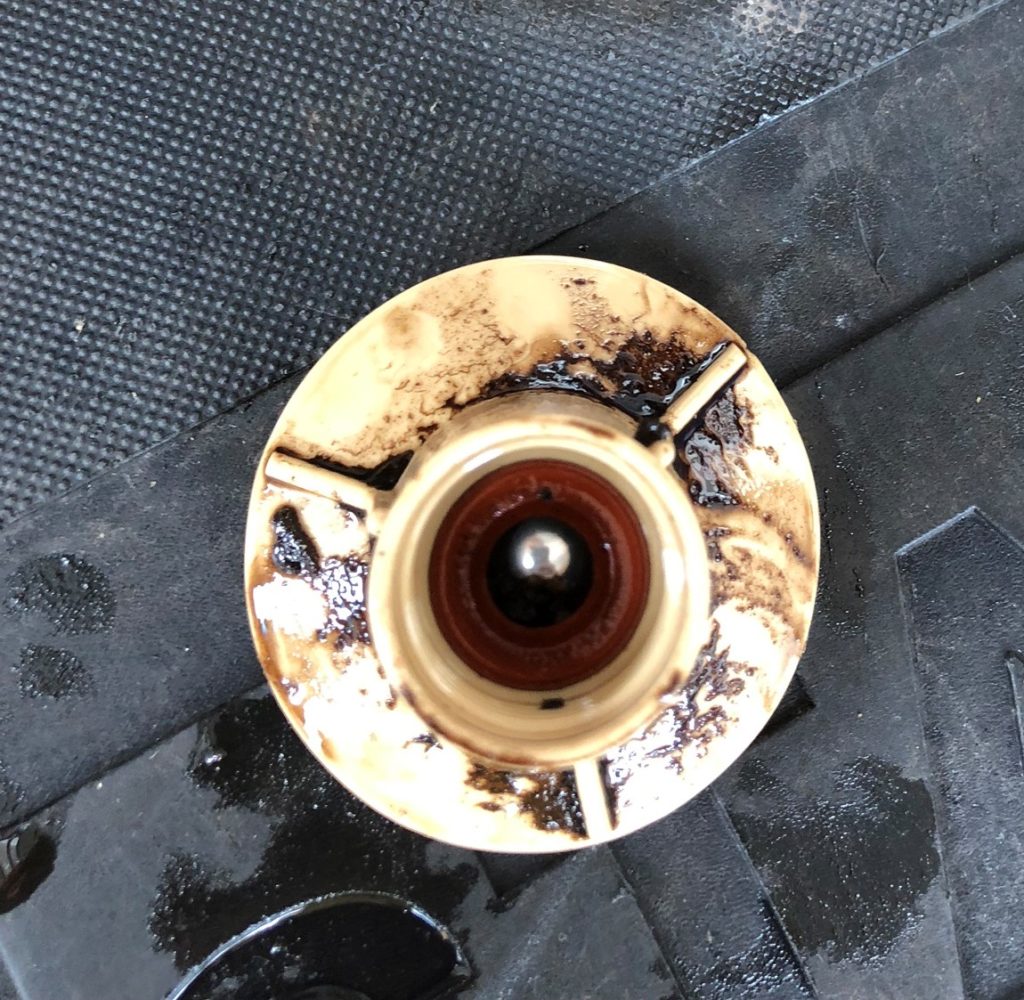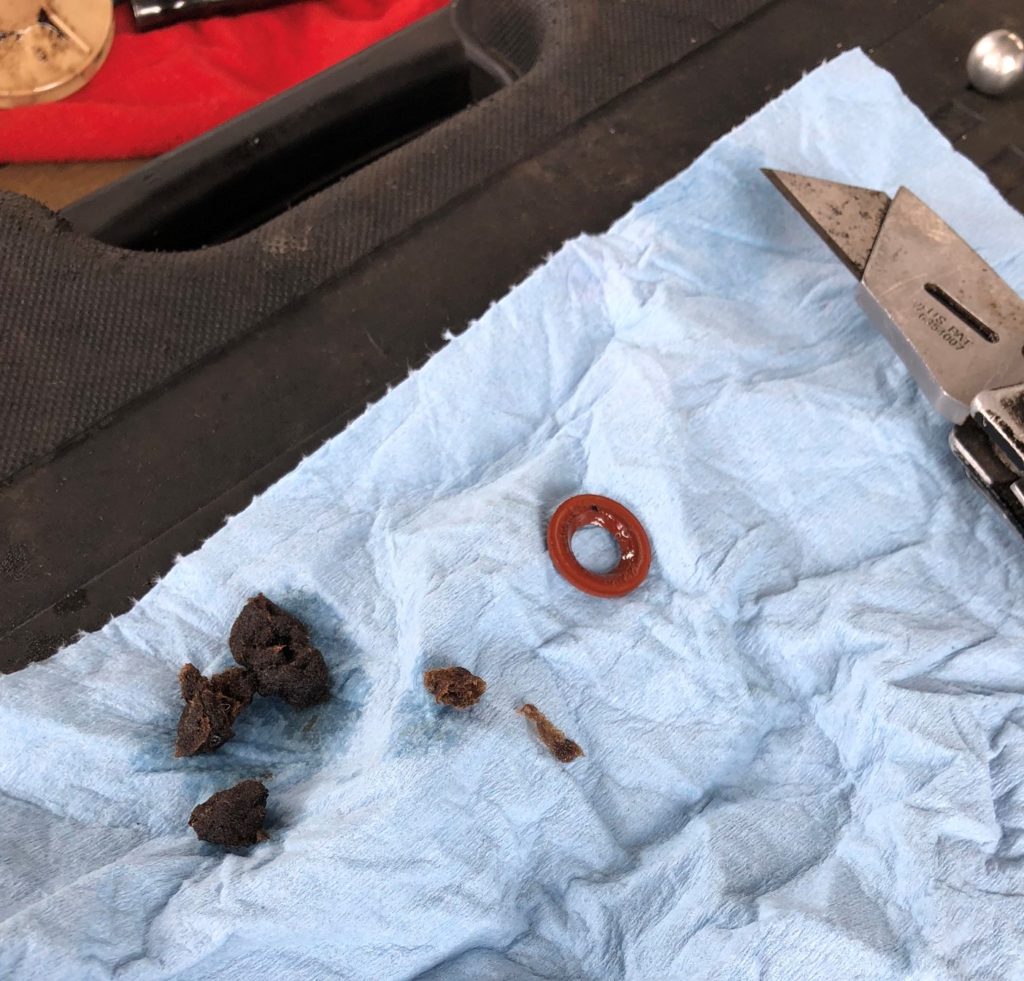
During our crossing from San Jose del Cabo in Mexico to the Marquesas in French Polynesia, we were very fortunate that nothing really important broke or fell off the boat. Of the issues that we encountered, two were irritating but we had workarounds, kind of.
Discovering that the thru hull for the watermaker was located a bit too far from Marathon’s centre line was very annoying. Its location means that the watermaker works fine while at rest, but not well if we are on a starboard tack because it emerges from the water and sucks in air. So we made water only when we were on a port tack or at anchor. Very fortunately, most of the 29 days that we were at sea, we were on a port tack.
The next problem that was a bit more than annoying was dirty fuel. We motored a total of 19 hours after leaving San Jose del Cabo, and much of that time was immediately after leaving until we were out into the Pacific and no longer in the wind shadow created by Baja. Lucky for us we normally had enough wind to sail, even in the doldrums (see video in the side bar).
However, when we were in sight of Nuku Hiva we decided to motor for the final approach because the wind had died and we were keen (some of us really, really keen to drop anchor ASAP in daylight). On this occasion the engine stopped after a period of time and we traced the problem to the primary fuel filter which was badly plugged. We changed the filter but it took so long to change the filter and bleed the engine (Perkins 4.108 engines are great except when it is necessary to bleed the fuel system – and maybe a couple of other things too!) that it became too late in the day to enter Taiohae Bay, our first anchorage, in daylight. So we drifted north overnight and sailed back in time to make landfall the following morning. We motored in without any difficulty and checking the vacuum gauge on the fuel line indicated that the filter was probably clogging again.
We left the Marquesas for Tahiti and again the wind was good and we sailed nearly all of the time. However, when we did have to motor, the engine would only run for a few hours before we had to change the filter. On our final approach to Papeete we changed the filter twice in order to be sure that the engine did not quit just as we were entering the pass into the harbour.
We sought the assistance of a mechanic in Papeete who recommended that we take all of the fuel out of the tank and run it through his Baja Filter at least three times, so we did.

After doing that, he could not suck fuel through the Racor 500 primary filter with his seriously powerful vacuum pump so we dismantled the filter to discover that the same fibres found in the Baja Filter had frozen the ball that helps separate out water when in the closed position. This means that the engine was generally able to suck fuel through the unit until a combination of material the clogging the filter itself plus the frozen ball, stopped all fuel from getting through to the secondary filter.
Visual inspection of the fibres suggests that somebody may have left a paper towel in the fuel tank when the fuel was cleaned back in La Paz about a year ago. There was certainly also an issue with algae or bacteria in the fuel itself – this built up despite having added a fuel preservative to the tank at regular intervals. The compound problem of the frozen ball and algae likely did not manifest itself when sailing in Mexico because the seas were rarely lumpy enough to stir up the crud off the bottom of the tank as they were once we left the wind shadow of the Baja Penninsula.


Hopefully, Marathon’s fuel is now clean and will stay that way.